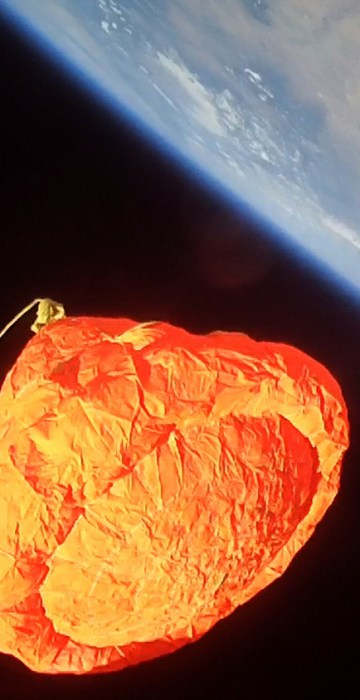
Science News
Month in Space: February 2012

Behold the ballute
Earth hangs in the background of this picture showing Armadillo Aerospace's ballute - a re-entry system that's a cross between a balloon and a parachute. The photo was taken by a camera mounted on Armadillo's STIG-A III test rocket, which was launched from New Mexico's Spaceport America on Jan. 28. The rocket rose to a height of about 50 miles (80 kilometers) during the test flight.
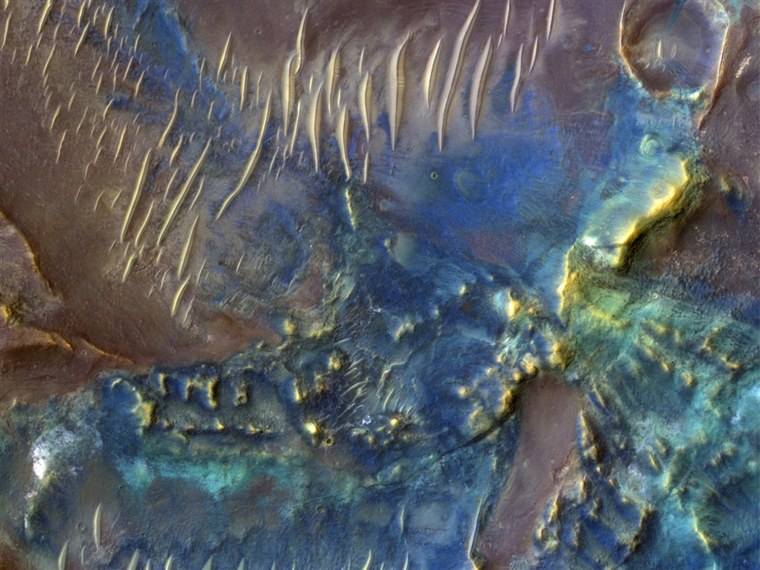
Blue, green and red planet
This false-color view of Toro Crater on Mars was captured on Dec. 1, 2011, by the High Resolution Imaging Science Experiment on NASA's Mars Reconnaissance Orbiter, and released on Feb. 1. The different colors reflect differences in mineral composition on the Martian surface.
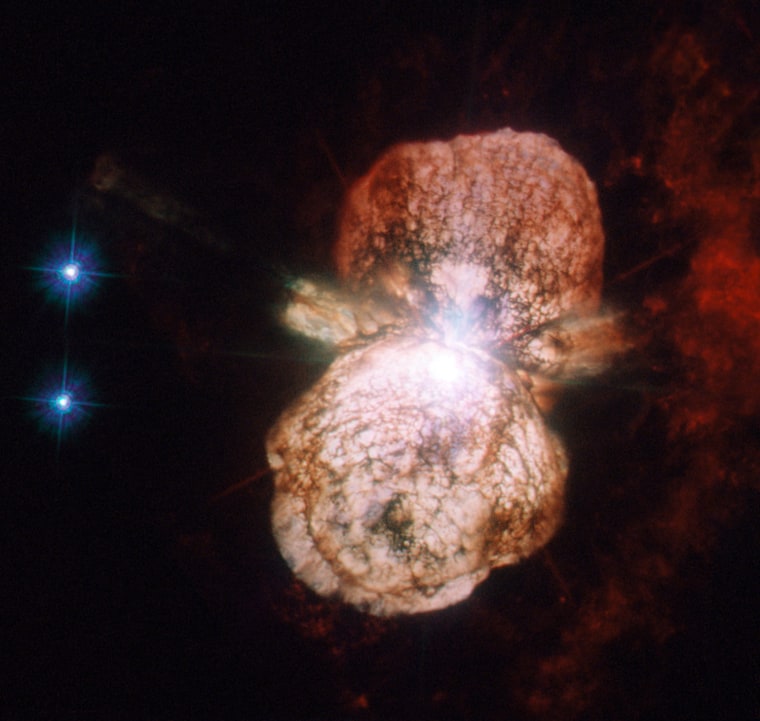
What a blast!
The dumbbell-shaped lobes of the Homunculus Nebula can be seen clearly in this picture from the Hubble Space Telescope, released Feb. 20. The nebula is made up of glowing material blasted out from the Eta Carinae binary star system, 7,500 light-years away. Eta Carinae is one of the closest stars to Earth that is likely to explode in a supernova in the relatively near future - although in astronomical time scales, the "near future" could still be a million years away.
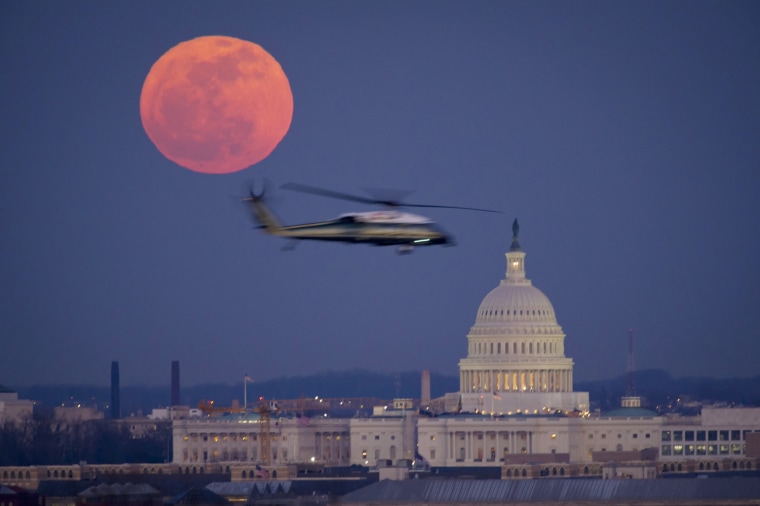

Eastern exposure
This "Blue Marble East" image, released on Feb. 2, is the flip side of a Western Hemisphere view that made a huge splash a week earlier. The image combines data acquired during six orbits by the Suomi NPP satellite, which monitors weather as well as climate trends. The four vertical lines of "haze" seen in this image are caused by the reflection of sunlight off the ocean.
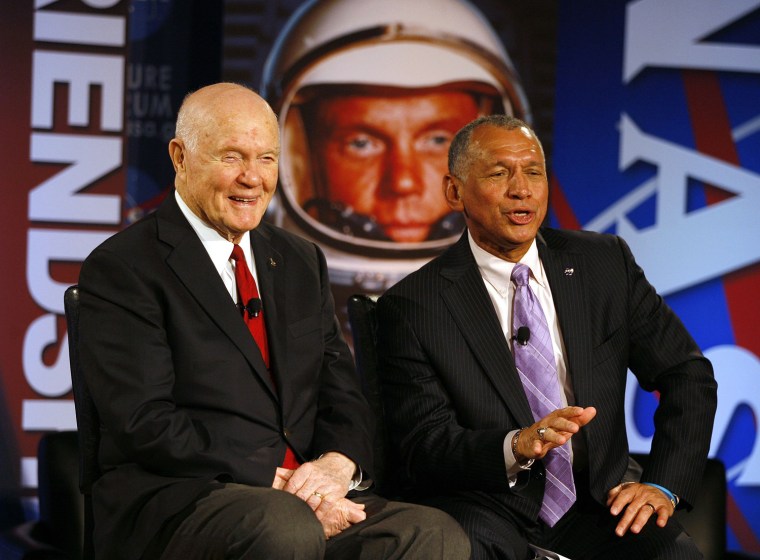
A golden life
Retired senator-astronaut John Glenn and NASA Administrator Charles Bolden talk with the crew of the International Space Station during a NASA Future Forum at Ohio State University in Columbus on Feb. 20. The date marked the 50th anniversary of Glenn's 1962 spaceflight, which made him the first American in orbit.
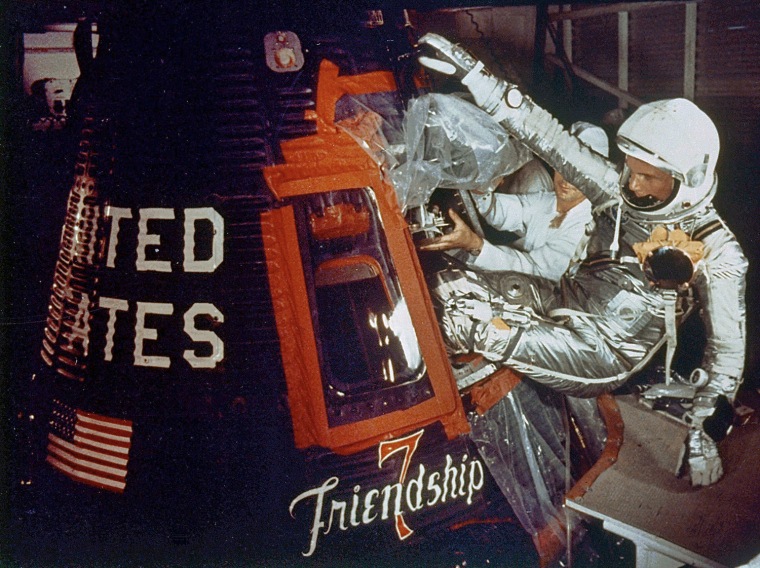
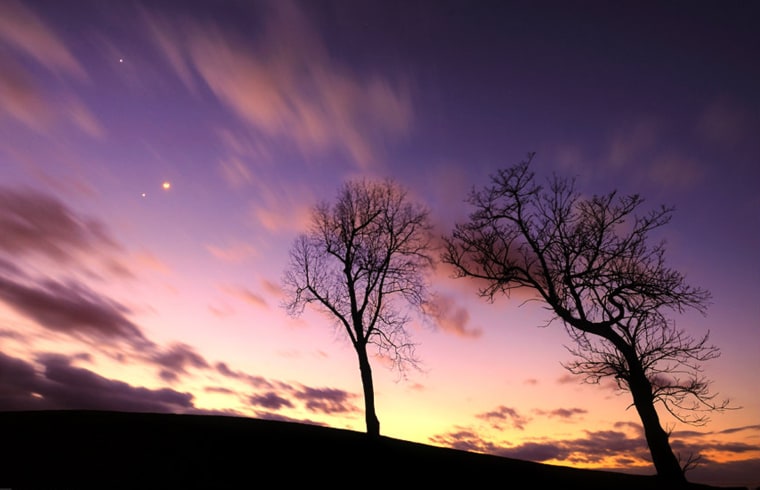
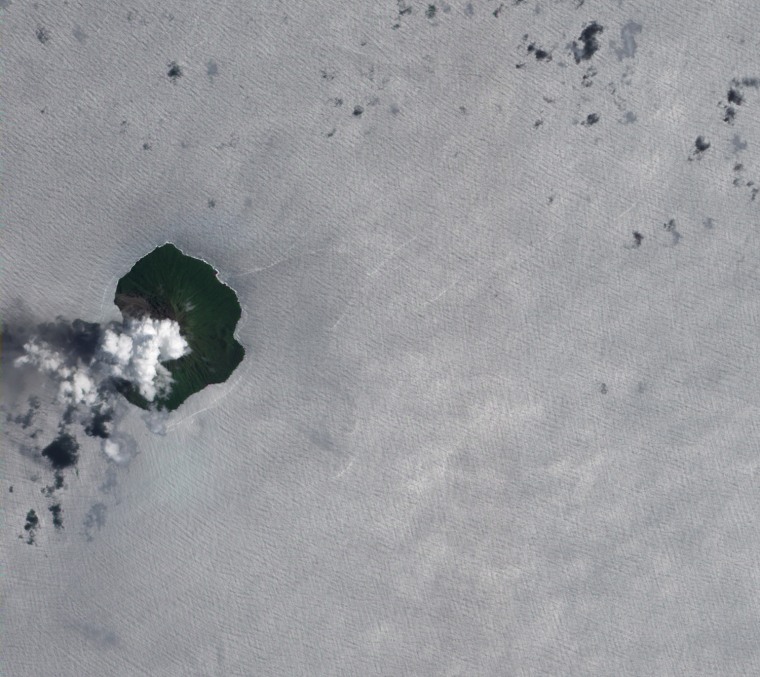
Where there's smoke...
A plume of volcanic gas, possibly mixed with a bit of ash, rises from the summit of Tinakula in the South Pacific, located about 1,400 miles northeast of Brisbane, Australia. The image was acquired on Feb. 14 by NASA's Earth-Observing 1 satellite. The glint of sunlight off the ocean surface makes the Pacific waters appear milky white.
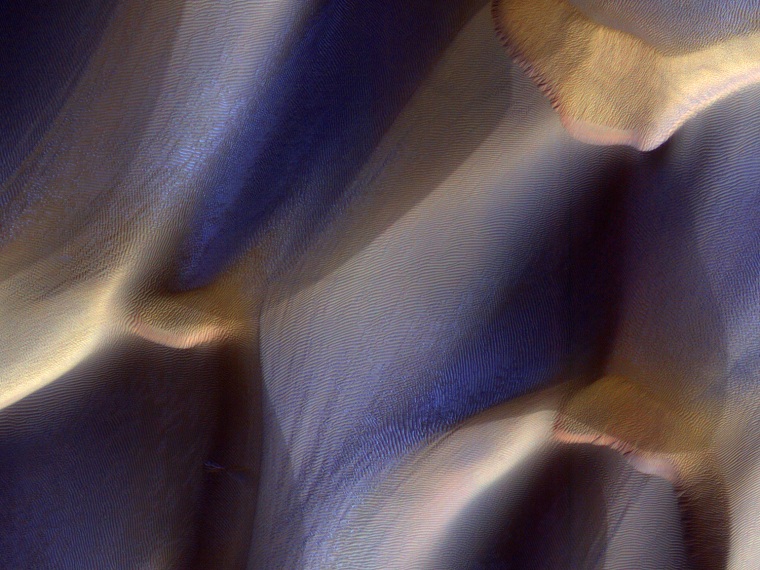

Inspecting the merchandise
Software billionaire Charles Simonyi peeks inside the Soyuz spacecraft he purchased and is now lending to the Museum of Flight in Seattle. The Soyuz TMA-14, which Simonyi rode up in 2009, was shipped from Russia and unpacked at the museum for display on Feb. 10.
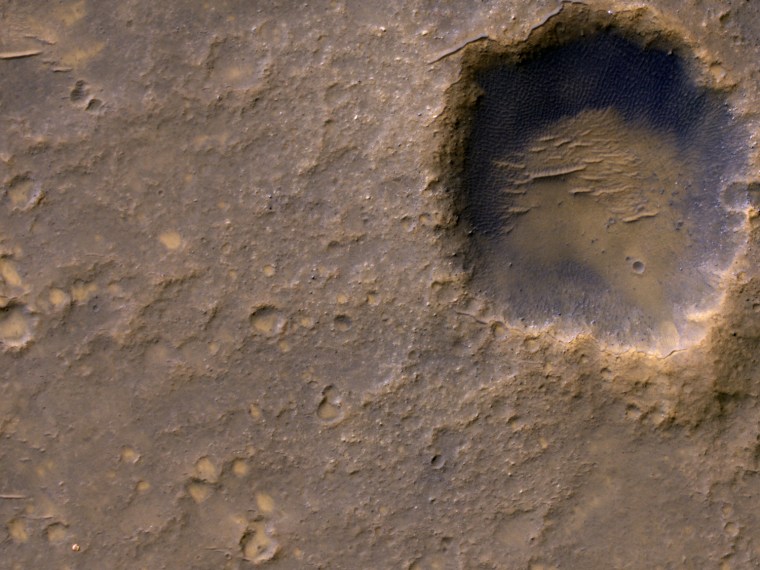
Spot Spirit's landing spot
This image from the high-resolution camera on NASA's Mars Reconnaissance Orbiter, captured Jan. 29, shows Bonneville Crater at upper right and the Spirit rover's landing platform at lower left. The lander is still bright, but with a reddish color, probably due to a covering of dust.
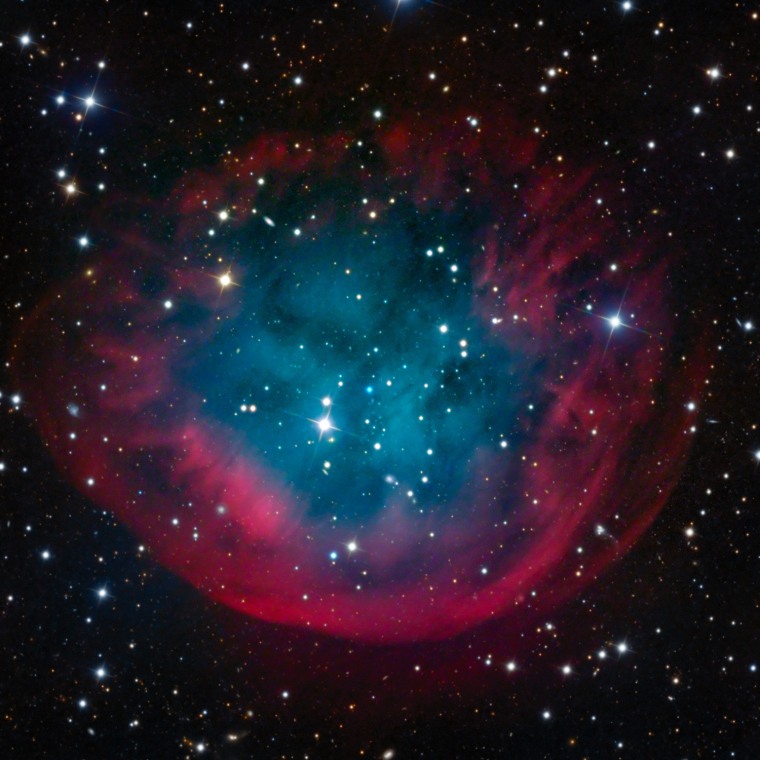
Beautiful blob
Astrophotographer Adam Block's image of the planetary nebula Abell 31, 2,000 light-years from Earth, is based on 21 hours' worth of observations using the 32-inch Schulman Telescope at the Mount Lemmon SkyCenter in Arizona during December 2011 and January 2012. Hydrogen emissions are shown in red, and oxygen emissions in blue. The shells of glowing gas are being thrown off by a dying star.
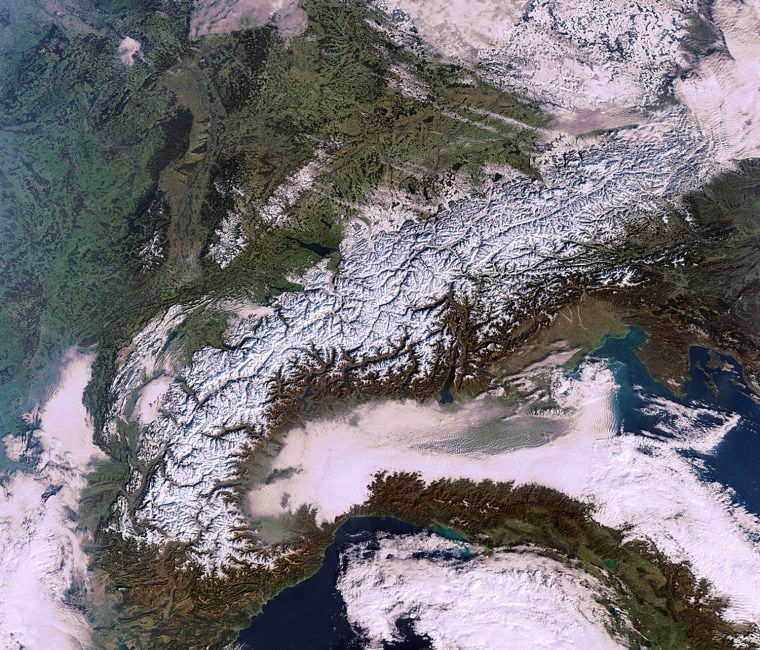
The Alps in winter
The snow-kissed Alps that stretch across France, Italy, Switzerland, Germany, Liechtenstein, Austria and Slovenia are captured in this Jan. 16 image from the European Space Agency's Envisat satellite. Owing to the snow cover and a relatively low illumination angle of the sun during this time of year, the ranges and valleys of the mountains stand out.
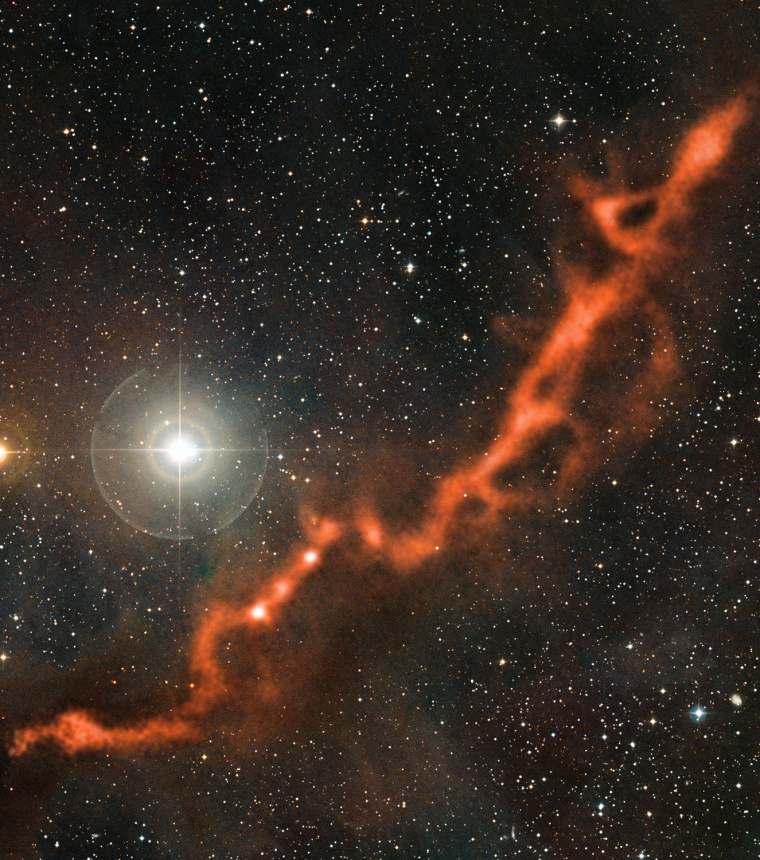
String of starbirth
This image from the European Southern Observatory's APEX telescope, released Feb. 15, shows part of the Taurus Molecular Cloud. Newborn stars are hidden within a sinuous filament of cosmic dust that stretches out over 10 light-years, at a distance of more than 450 light-years from Earth. The bright star above the filament is known as f Tauri.
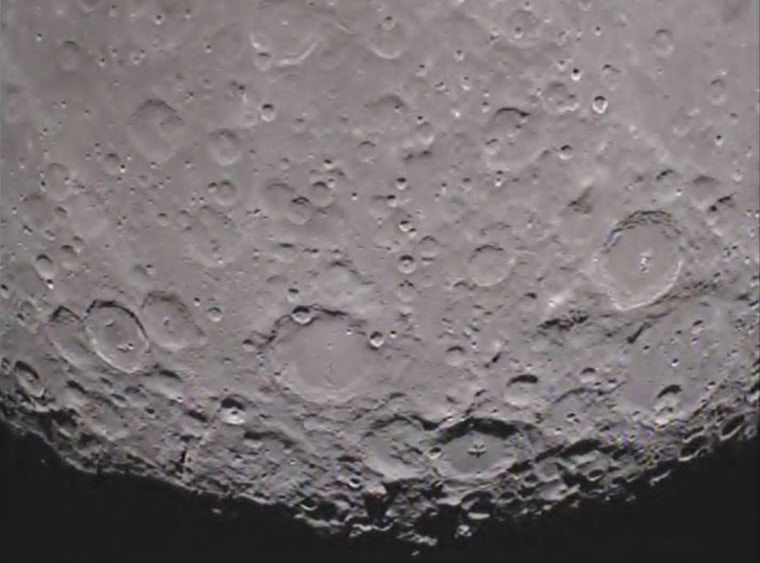
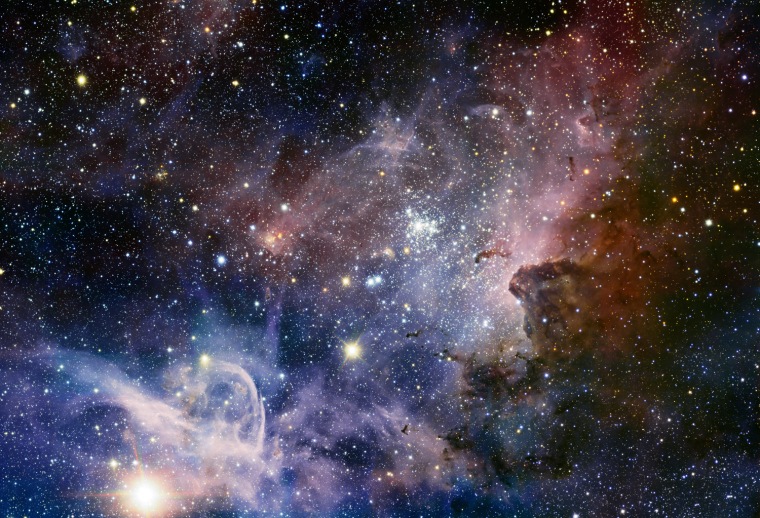
Wide-angle nebula
This broad panorama of the Carina Nebula, a region of massive star formation in the southern skies, was taken in infrared light using the HAWK-I camera on the European Southern Observatory’s Very Large Telescope. The image, released Feb. 8, shows many previously hidden features scattered across a spectacular celestial landscape of gas, dust and young stars.